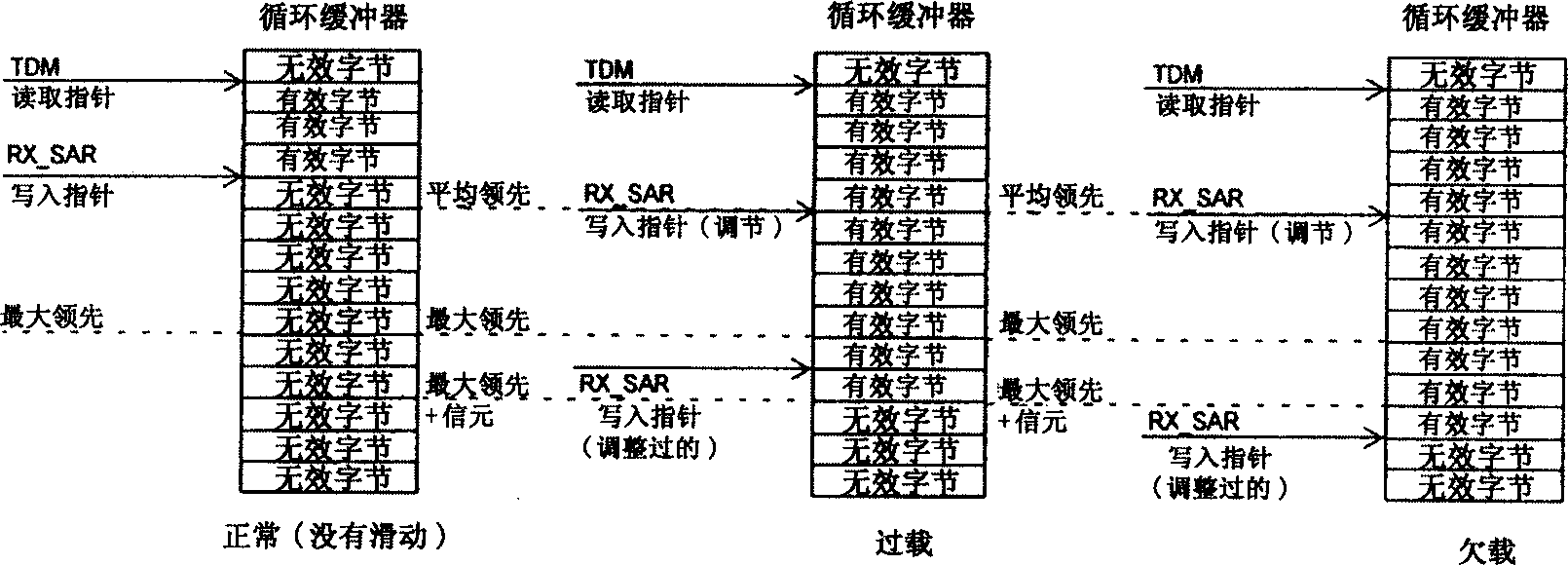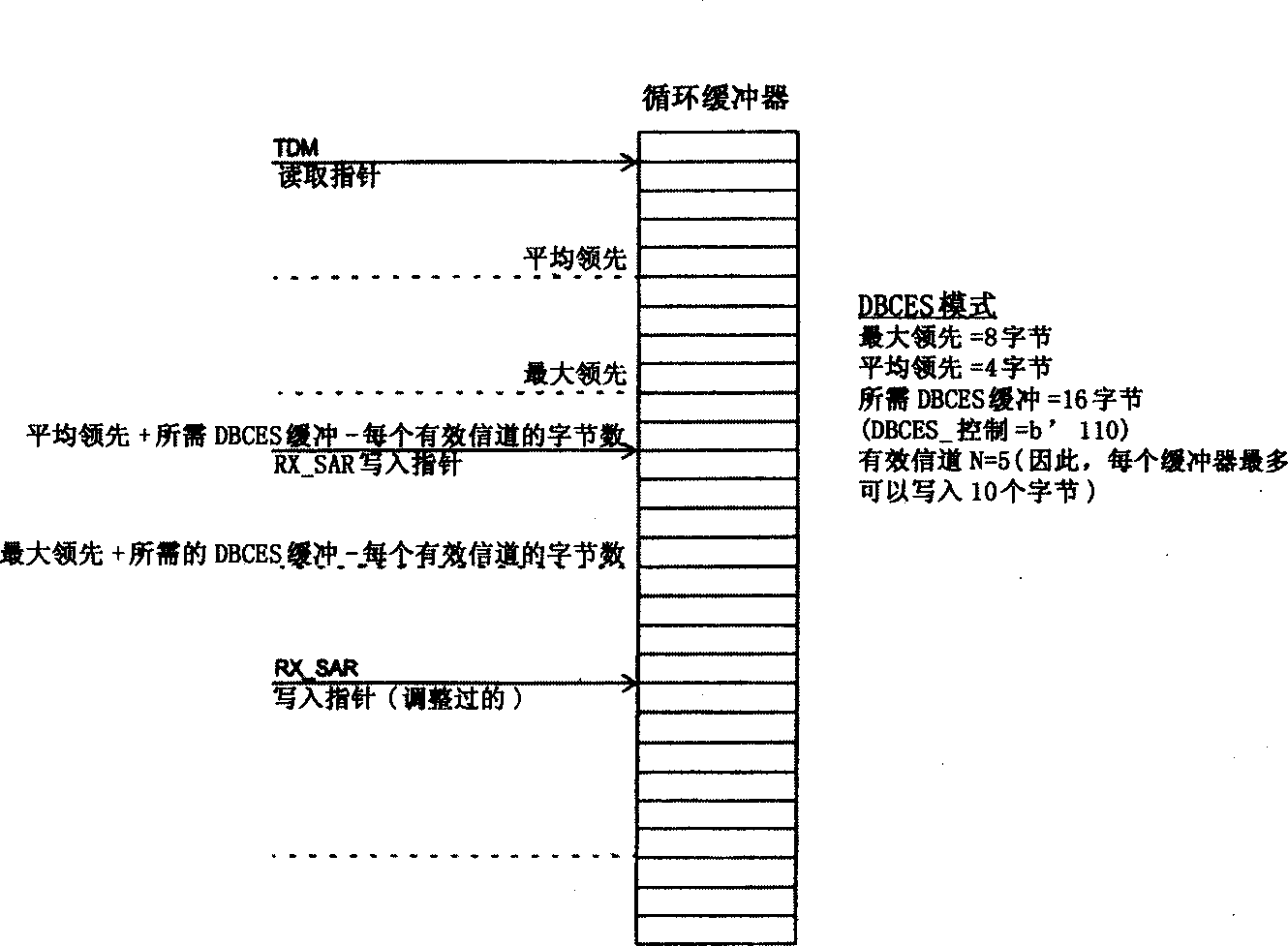Method for detecting and restoring underload and overload slip
A pointer, cell technology, applied in the field of detection and recovery of underload and overload slip, can solve the problem of not considering buffering and so on
- Summary
- Abstract
- Description
- Claims
- Application Information
AI Technical Summary
Problems solved by technology
Method used
Image
Examples
Embodiment Construction
[0037] Detailed Description of Preferred Embodiments
[0038] Referring now to Figure 1, in "normal" or basic SDT (Structured Data Transfer) operation, cells arrive at the SDT receive SAR (RX_SAR) at an equal rate, and some cell delay variation occurs due to varying delays in the transmission circuit ( CDV). Since cells arrive at an "average" equal rate, they are usually written to the circular buffer at an average distance from the read pointer (the average distance is -CDV). Cells may arrive slower or faster than average due to cell delay variations, but if there are always multiple cells equal to the CDV in the buffer, slippage should not occur. Only in extreme cases (for example, the virtual circuit is severed, or the receiver and transmitter clocks deviate significantly) will slippage occur.
[0039] In Fig. 1, the operation of the buffer in SDT mode is shown, invalid bytes represent bytes that have been read, or in the case of startup, not written. In the normal state...
PUM
 Login to View More
Login to View More Abstract
Description
Claims
Application Information
 Login to View More
Login to View More - R&D
- Intellectual Property
- Life Sciences
- Materials
- Tech Scout
- Unparalleled Data Quality
- Higher Quality Content
- 60% Fewer Hallucinations
Browse by: Latest US Patents, China's latest patents, Technical Efficacy Thesaurus, Application Domain, Technology Topic, Popular Technical Reports.
© 2025 PatSnap. All rights reserved.Legal|Privacy policy|Modern Slavery Act Transparency Statement|Sitemap|About US| Contact US: help@patsnap.com



